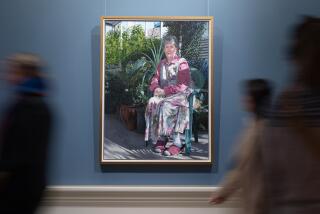Irish City of Ghosts Celebrates 1,000th Birthday
- Share via
DUBLIN, Ireland — This is a city of ghosts, where notable streets and noble architecture hint in the evening mists off the Irish Sea of a prouder time, and companionable pubs and brilliant theater productions echo with lyrical voices of the past.
And if those like myself who embrace this venerable, storied city needed yet another excuse to join with those ghosts and toast their rich history, Dublin is celebrating its 1,000 birthday this year.
It was in AD 988 that the Celtic king Mael Sechnaill wrested a small settlement on the banks of the river Liffey away from the Vikings, an event city officials are using to date the founding of the Irish capital.
“The scholars we asked to research the city’s history thought the victory was as good a time as any to mark the founding,” said Aisling Kilroy of the city’s millennium committee. Her remarks were made over breakfast in the timeless Shelbourne Hotel on St. Stephen’s Green, a setting in itself replete with history.
Literary Ghosts
As she spoke, I kept glancing into the recesses of the dining room, expecting to see William Butler Yeats, James Joyce and Sean O’Casey sitting around a table waiting for George Bernard Shaw or Brendan Behan, or some other literary ghost. All had been Dubliners who at one time or another watered at the gracious Shelbourne on their way to fame.
Bringing me back to the present was Kilroy and the lovely cadence of her Irish brogue that makes music out of the spoken English and could with ease convince you leprechauns are real.
“Of course a millennium is a fine time for a party, and we do love our parties, be they birthdays, or wakes,” she added with conviction.
That the city of Cork, which Dublin competes with in sports and culture, as well as for the tourist trade, marked its 800th birthday with a gala celebration in 1985 was coincidental, said Kilroy. “There’s no real comparison; Dublin is older, and better; certainly more interesting.”
However arbitrary and prideful, the dating has prompted the city to polish its landmark architecture and monuments, dust off the ledges of its splendid museums, sweep the sidewalks in its graceful Georgian squares, primp the plantings in its lush parks, and schedule a variety of special events to celebrate the millennium.
A Week of Concerts
St. Patrick’s Day is being extended to St. Patrick’s Week, with the traditional parade on March 17 promising to be more spectacular than ever, followed by a week of concerts. In May there will be an international piano competition and a street carnival, in June a writers conference and public readings, and on the weekend of July 9 a citywide birthday party.
Also on the year’s schedule are, among other things, a folk music and dance festival, a theater festival, special sporting events, and various art and crafts exhibits. For a detailed schedule, contact the Irish Tourist Board, 757 3rd Ave., New York 10017, phone (212) 418-0800, or the Dublin Millennium, 45/46 Lower O’Connell St., Dublin 1, Ireland.
But beyond the events and celebrations is Dublin itself; a weather- and time-worn mix of architectural styles and storied life styles, stirred by the poet souls of the natives. It is a mix to be toasted, preferably with a pint of locally brewed dark, creamy-topped Guinness stout.
Great, Gray Monuments
There is the capital city of Dublin with its wide, brawny streets, such as O’Connell, and its great, gray- stone public monuments. These include the grand classical-style custom and parliament houses, and Bank of Ireland building, and an array of churches, dominated by the stately St. Patrick’s Cathedral, and the medieval St. Audoen’s, its tower dating back to the 12th Century.
Within easy walking distance of the capital city is Merrion and Fitzwilliam squares, and glimpses of the Georgian city of Dublin: the city of elegant landscaped parks lined by simple, red brick houses distinguished by the individuality of their doorways painted in a rainbow of bright colors and framed in striking patterns of glass.
Then there is the storied city of Dublin: the city of Yeats, Joyce, Shaw and Behan, as well as playwright Samuel Beckett, satirist Jonathan Swift and political theorist Edmund Burke. Their spirit lives on the hallowed halls of Trinity College, sitting cloistered in the center of downtown, in the city’s diverse theaters, and in conversations in pubs and in lounges.
The theaters are particularly inviting, offering a variety of productions of consistently high quality for relatively inexpensive ticket prices. The best-known theaters are the Abbey, founded in part by Yeats, and around the corner in its basement, the Peacock. Aside from the actual plays, we found the most flavorful theater to be the Gaiety, a Victorian barn of a building dating to 1871 and containing, in addition to an ornate 1,170-seat auditorium, two fine inviting pubs.
To capture a sense of the spirit of Dublin past and present, a visit to a few select pubs is a necessary, however much you imbibe or not. Some are not bad either simply for a snack, lunch or a light or late dinner. Most of all they are best for leaning back and listening to the Irish idiom and absorbing a bit of the culture.
Traditional Hangout
Everyone has some favorites, and for different reasons. Among ours for tradition is Mulligans, a hangout on Poolbeg Street for those with a bent for the word spoken and written. The pub was founded in 1782 and looks it. More upscale and upbeat--sometimes you just don’t feel like reviewing the litany of Ireland’s ills--is Neary’s, on Chatham Street off Grafton Street, replete with flowered wallpaper and Victorian-style lamps.
For atmosphere we also loved the upstairs bar at the Gaiety Theater on King Street, and for being just plain friendly, The Liberty Belle, on nondescript Francis Street in the old town section of Dublin.
We happened to wander into The Liberty Belle one afternoon in search of a light lunch and, though it is very much a neighborhood pub, were welcomed with traditional Irish warmth. In time our 2 1/2-year-old son Josef was being invited behind the bar to pull down the beer pumps and fill our glasses.
Dublin may have seen better times. As Joyce observed in “A Portrait of the Artist as a Young Man,” published in 1916, “The soul of the gallant venal city which his elders had told him of had shrunk with time to a faint mortal odour.”
That Dublin is indeed mortal is part of its charm. It is a city not meant to be revered, not even on its 1,000 birthday, but to be enjoyed.
More to Read
The biggest entertainment stories
Get our big stories about Hollywood, film, television, music, arts, culture and more right in your inbox as soon as they publish.
You may occasionally receive promotional content from the Los Angeles Times.










